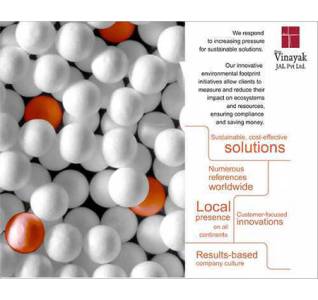Description
Ion Exchange: A Powerful Purification and Separation Technology
Ion exchange is a widely used and highly effective process for separating ions from solutions by selectively exchanging them with ions of a similar charge from a solid phase. This solid phase, known as an ion exchange resin, is a complex polymer containing functional groups capable of binding ions. The process is reversible, allowing for regeneration and reuse of the resin.
How it Works: The Exchange Process
The core of ion exchange lies in the electrostatic attraction between charged functional groups on the resin and ions in the solution. These functional groups can be either:
- Anionic (negatively charged): These resins are called anion exchange resins and attract positively charged ions (cations). Common functional groups include quaternary ammonium groups.
- Cationic (positively charged): These resins are called cation exchange resins and attract negatively charged ions (anions). Common functional groups include sulfonic acid groups.
The exchange process proceeds according to the law of mass action, meaning the equilibrium between ions in the solution and ions bound to the resin is dynamic. By carefully controlling factors like the concentration of ions in the solution, pH, and the type of resin, highly selective separation can be achieved.
Types of Ion Exchange Resins:
Ion exchange resins are categorized based on their functional groups, matrix structure, and physical properties. Key types include:
- Strong Acid Cation Resins: Exhibit high exchange capacity over a wide pH range. Commonly used for water softening and demineralization.
- Weak Acid Cation Resins: Have a lower exchange capacity and operate effectively at higher pH levels. Often used for selective removal of certain cations.
- Strong Base Anion Resins: High exchange capacity across a broad pH range. Effective for removing various anions.
- Weak Base Anion Resins: Lower capacity, best suited for specific anion removal at lower pH levels.
Furthermore, resins can be classified based on their physical form:
- Gel-type resins: Uniform porous structure.
- Macroporous resins: Larger pore size, allowing for better access for large molecules.
Applications of Ion Exchange:
The versatility of ion exchange makes it an indispensable technology across numerous industries:
- Water Treatment: Softening, demineralization, purification, removal of nitrates, and other contaminants.
- Pharmaceutical Industry: Purification of pharmaceuticals, isolation of specific compounds, and removal of impurities.
- Food and Beverage Industry: Sugar refining, purification of fruit juices, and removal of unwanted minerals.
- Hydrometallurgy: Recovery of valuable metals from ores and solutions.
- Chemical Processing: Separation and purification of chemicals.
- Nuclear Industry: Separation and purification of radioactive isotopes.
Advantages of Ion Exchange:
- High Efficiency: Achieves high purity levels.
- Selectivity: Allows for targeted removal of specific ions.
- Regenerability: Resins can be regenerated and reused multiple times, reducing waste and cost.
- Versatility: Applicable to a wide range of applications.
- Relatively low energy consumption: compared to other separation techniques.
Limitations of Ion Exchange:
- Resin fouling: Accumulation of organic matter or precipitates can reduce resin efficiency.
- pH limitations: Some resins have limited operating pH ranges.
- Cost: The initial investment in resin and equipment can be significant.
- Waste generation: Spent regenerant solutions may require treatment before disposal.
Ion exchange is a powerful and versatile technology with a wide range of applications. Understanding its principles and choosing the right resin for a specific application is crucial for successful implementation.
